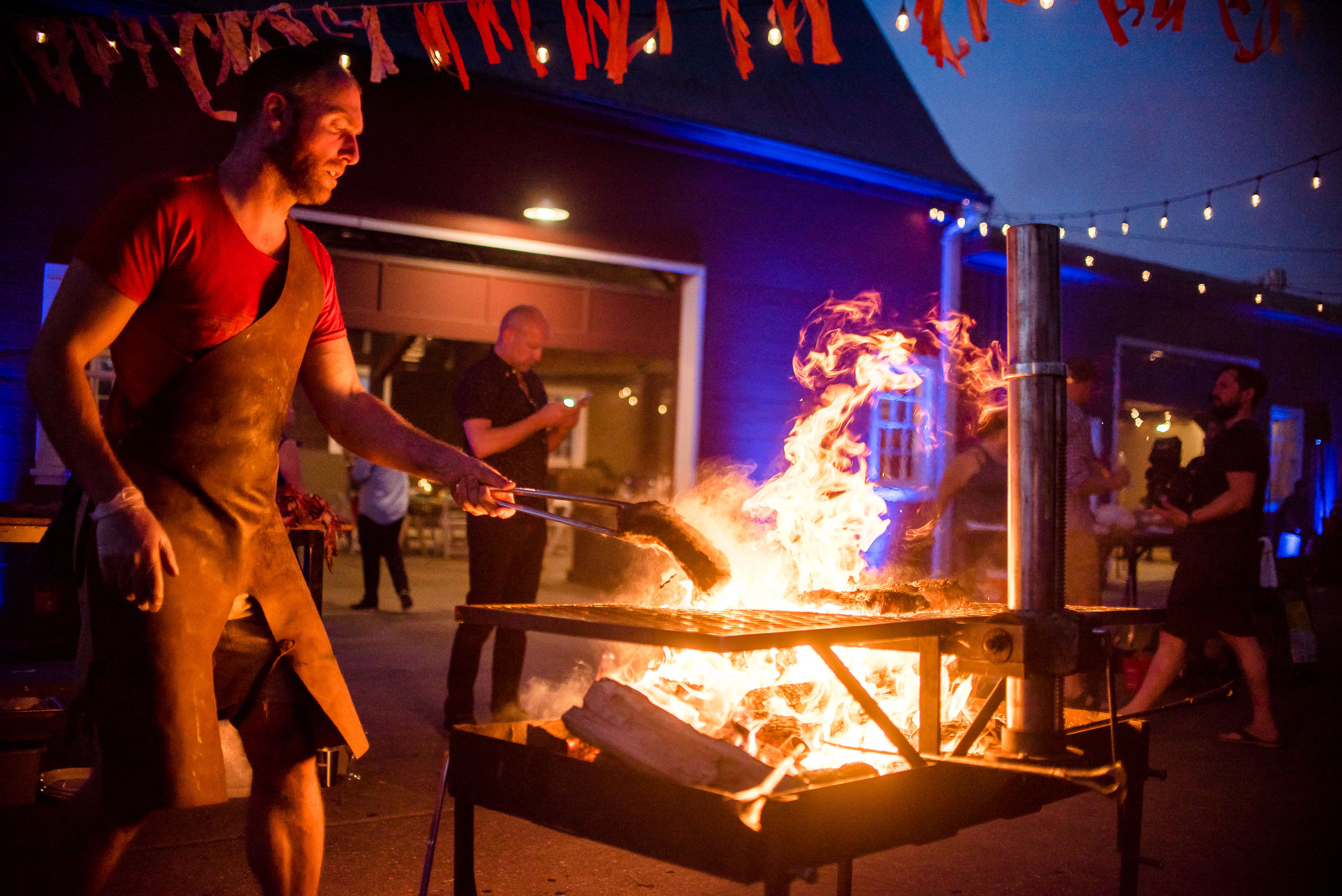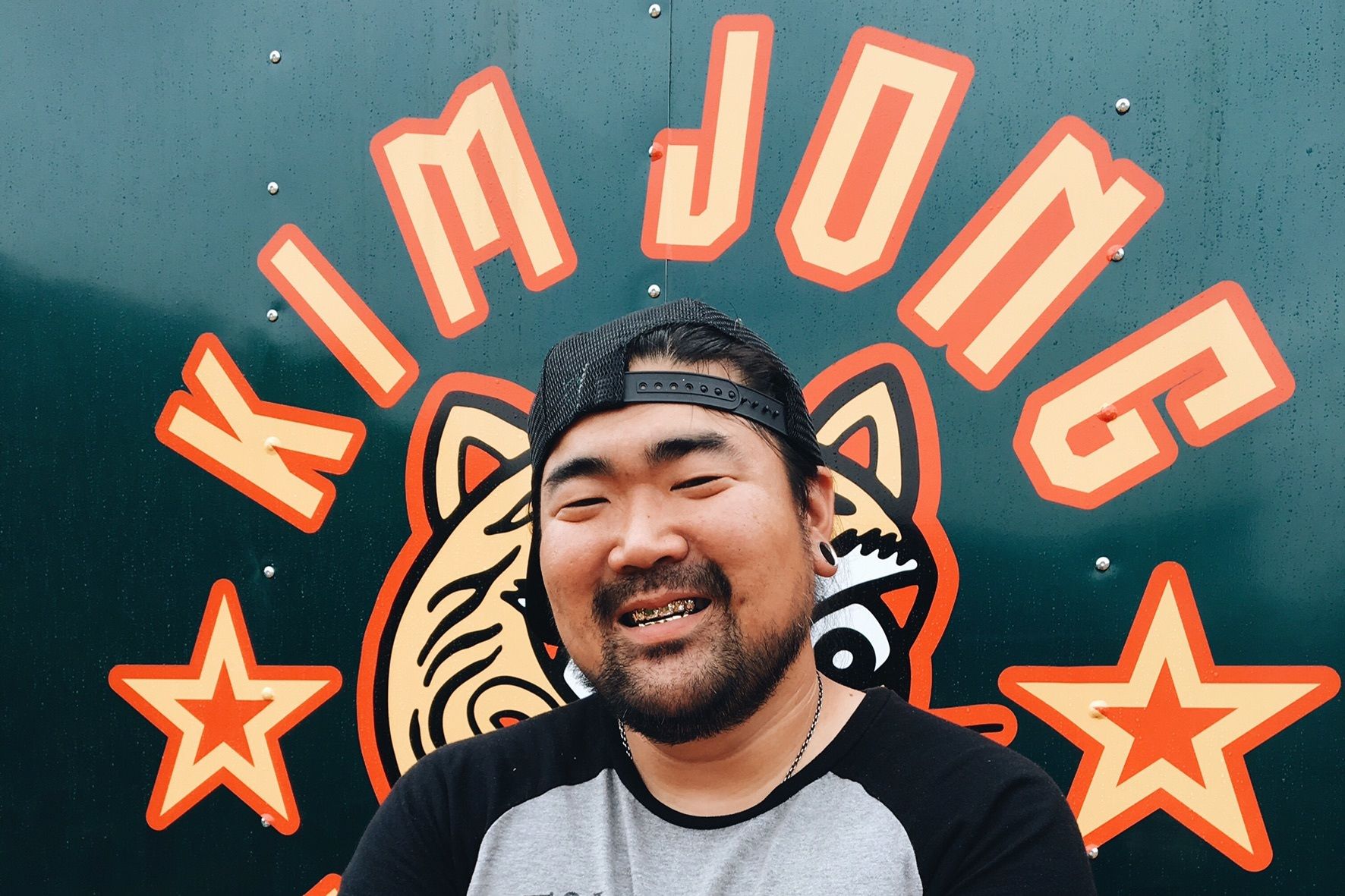How a Rural Washington Grange Birthed a ‘Forest Grunge' Band

Meet Giants in the Trees: Ray Prestegard, Krist Novoselic, Jillian Raye, and Erik Friend.
Image: Courtesy Megan Blackburn
Far from his hometown of Seattle, deep in the rural lowlands of Wahkiakum County, Washington—just across the Columbia from Astoria—former Nirvana bassist Krist Novoselic made a new life for himself. After a slew of tanked post-Nirvana music projects, Novoselic settled into a peaceful farming life out of the limelight.
Then, three years ago, he put out an open call to his Grays River Grange community (think Little House on the Prairie, modern times), inviting local musicians to join him for a jam session.
The turnout was measly: only four people showed. “It was just the universe at work,” says Jillian Raye, a California transplant and one of the serendipitous four. “We just thought we were community members coming together when, in fact, we had this chemistry that could not be denied.”
Those four musicians—Novoselic on accordion and electric bass, Raye on vocals, bass, and banjo, Ray Prestagard on harmonica and strings, and Erik Friend on percussion—would go on to form Giants in the Trees, a rock-pop band that blends Americana sounds with dark, groovy vibes. Since their early gigs at St. Johns honky-tonk the Fixin’ To, they’ve released two albums—the latest, Volume 2, came out in March—and have played raucous, sold-out shows up and down the West Coast. This weekend, Portlanders will have a chance to see the band in action at Cowabunga, Portland Monthly’s three-day, all-you-can-devour culinary bender, hosted at Rossi Farms Friday–Sunday, July 12–14. (Here’s more on all the fest has to offer.)
Giants in the Trees will play Saturday’s Barn Bash, a friendly competition among Portland Monthly’s favorite restaurants and breweries (think bites of burgers, barbecue, and tacos, plusa taste of the freshest brews in the city). In advance of the event, we talked with Raye about the origins of Giants in the Trees, how Grange life affects the band’s music, and Sasquatch lore.
Tell me a bit about your musical background. What led you here?
My dad played guitar, so growing up I got started watching him and learning. I played off and on as a kid, but I got more serious in high school. I did the whole singer-songwriter thing for a long time. About six years ago, after I received my business degree, I moved to the Pacific Northwest from California—leaving that business path and going onto my art path. I found some amazing people in this area. They are such an inspiration. The place I live, I wouldn’t call it an intentional community—I just live out in rural Washington, and I have a garden and dogs and that kind of thing.
How did Giants in the Trees come together?
Krist is involved in our local Grange chapter—it’s like a rural community center—and he decided to have a random jam session. I found out about it, like, three hours before when Erik [Friend] called me. I didn’t even have a microphone yet, and Krist was playing an acoustic bass. We started writing “Sasquatch” that day and dabbled with “Center of the Earth” and it was like, OK, these are already songs! And the next practice, I had a microphone. Krist had the electric bass, and we were ready to rock. We said, “This is it,” and just kept going, kept meeting. That was about three years ago.
How would you describe the sound of Giants in the Trees?
It’s hard to put us in a category because every song has a unique personality. I think the Americana thing comes from our rootsy kind of sound. And the subject matter: a lot [of our] songs are about the struggle, life, and just trying to solve our problems. It’s hard to put a name [on] it. We’ve been called “forest grunge” in the past. We all bring our own musical backgrounds—it’s such a melting pot. When Krist is playing accordion, I’m playing bass, and it’s just like a barnyard thumper. And then we have songs that are really heavy and mysterious, ethereal and dark—songs like “Pretend.” And that’s why I love this project so much. There’s no limitation; I’ll never have to be put in a box.
How does your environment and the Grange community affect the music you make?
I feel like nature and the forest is really strongly reflected in the music. A song like “Sasquatch” is a great example of us being very mystified by this area and the Sasquatch lore. It’s a very Pacific Northwest vibe. When we’re writing, we are very much in the moment and in the place. I think our music is very Pacific Northwest. It’s a very rich and lush area, and that sense of abundance and wholeness, it definitely comes through.
What can a crowd expect from a live performance that may be different from the album?
The biggest difference you will see is just the energy—we are very high-energy. Like, super happy and just being ourselves. We like to cultivate that high-energy relationship with the audience to all come together for a beautiful musical experience.
Do you have any favorite spots or hangouts around Portland?
Oh, if only we were that cool. We pretty much just eat whatever is around the venue and jet back home. The highlight for us is really just playing the show and getting to see everybody. Our crowd is made of all different kinds of people—anybody who likes to rock out and have some fun will come to our show.
What is the biggest misconception that people may have about the band or the music?
Maybe that we’re a grunge band. It’s still evolving, but think people get really excited that Krist is in the band. Once they’re at the show, though, I think we win them over with the music and the dynamics of the band. People may come to see Krist, but they leave loving Giants.



